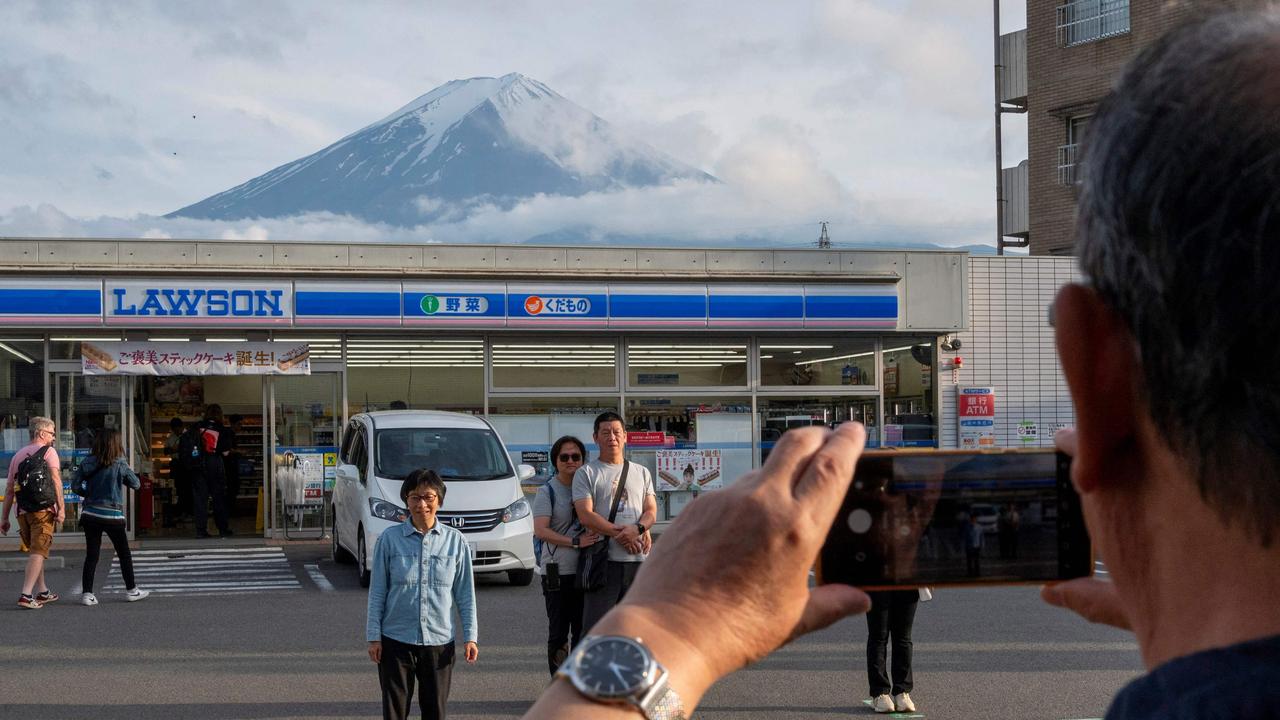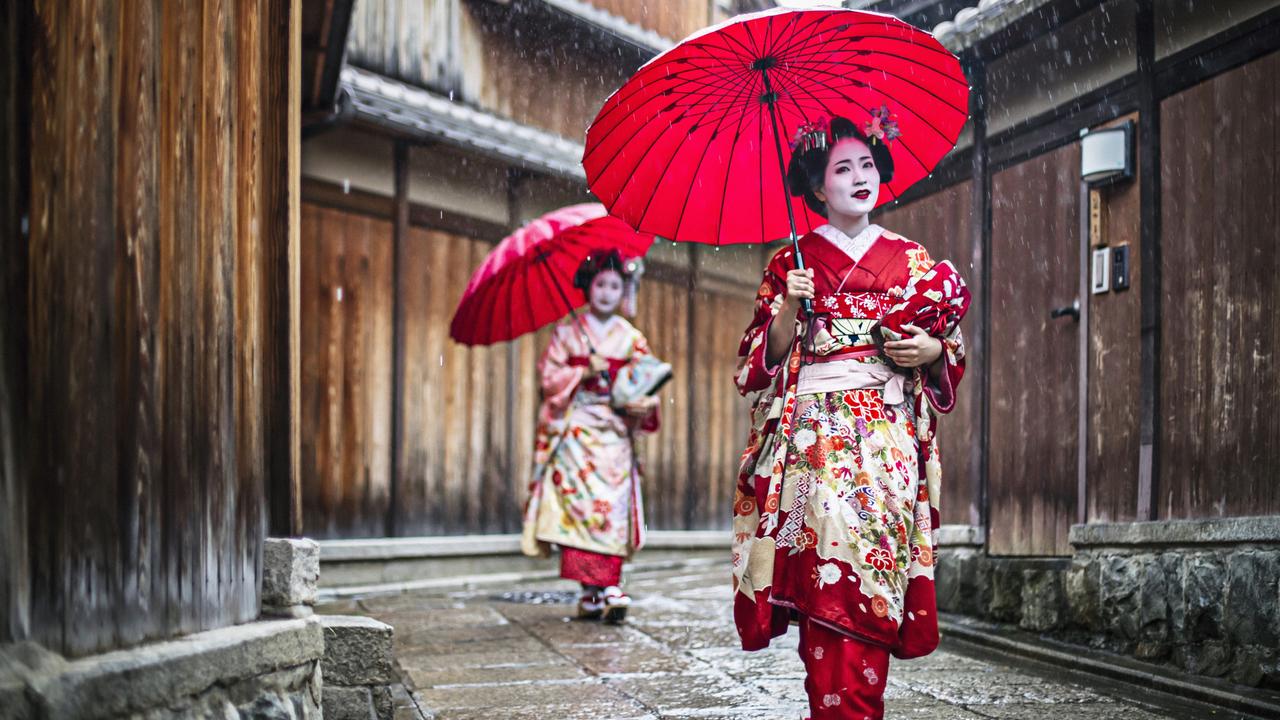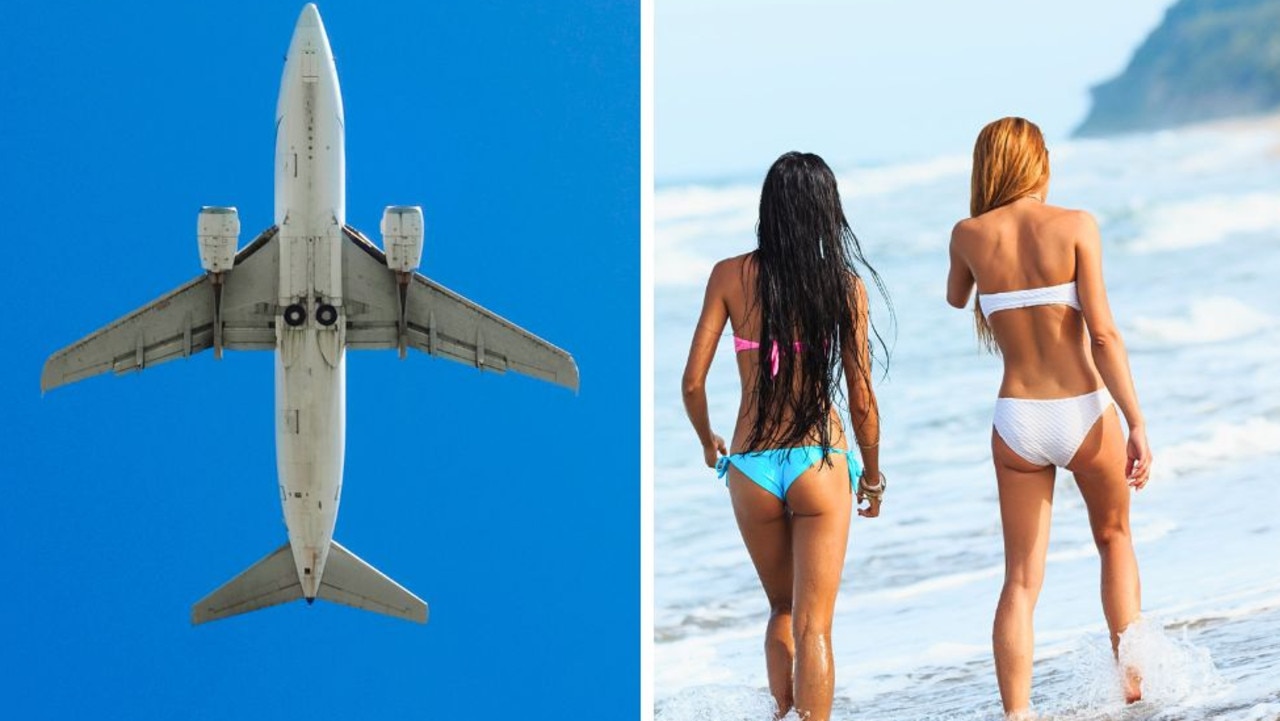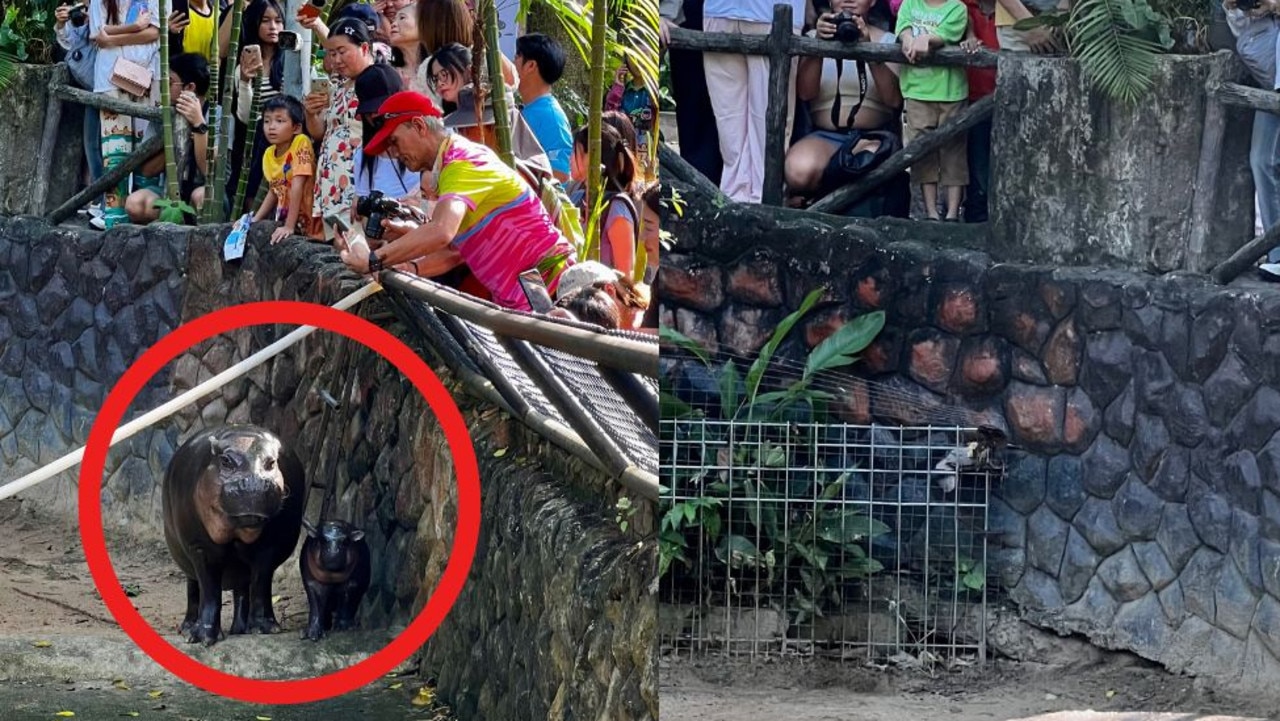Surprise move after tourists take over Japanese town, Mt Fuji blocking barrier installed
A Japanese town’s move to deter tourists made international headlines earlier this year, but less than three months later it’s gone.
A popular spot to snap pictures of Japan’s iconic Mount Fuji was blocked off in May amid increasing tensions between locals and tourists in holiday hotspots across the world – but it has now been removed.
The sacred mountain, the tallest peak in Japan, can be seen behind a convenience store in the town of Fujikawaguchiko, leading to streams of foreign tourists stopping there to take pictures and share them on social media.
Frustrated locals complained of the visitors littering, trespassing and breaking traffic rules.
In May, a black barrier measuring 2.5m by 20m was erected to block the sought-after Instagram shot.
By the following week it was reported that there were about ten holes in the black mesh barrier at eye level, with officials considering the need for stronger material.
However, it seems less than three months on, the barrier may be gone for good.


Officials quietly took down the barrier on August 15, according to CNN.
“Since we installed the screen in May, there have been no more people staying long in the area. We do feel it has been effective,” a councillor told the outlet.
There are still security guards patrolling the area.
Japan also imposed new rules for climbing Mount Fuji from July, with tourists now required to book a limited spot and pay a fee.
Climbers are charged 2000 yen ($20) each and only 4000 people can climb each day to ease congestion.

It follows tourists being banned from entering certain alleys in Gion, the famous geisha district in Japan’s ancient capital of Kyoto.
Japan is growing hugely in popularity among Australian travellers, rivalling other top destinations like Bali, Indonesia.
In the first half of the year more than 460,000 Australians visited Japan, up 68 per cent on the same time last year, according to data from the Japan National Tourism Organization.
Overall there were about 17.8 million foreign visitors to the country between January and June, compared to 10.7 million during the same six months last year – an increase of 66 per cent.

Cities fight back against ‘overtourism’
Popular cities across the globe are looking desperately for new ways to cope with a massive boom in tourism post-Covid.
It is widely acknowledged there is a major problem with tourism in Venice, however, how to deal with it is a contentious matter.
For the first time this year, Venice introduced an $8 entry fee for day trippers during the peak season. Tourist groups have also been capped at 25 people.
Closer to home, Bali introduced a $15 fee to enter the wildly popular holiday island in February, with the funds going toward protecting its culture customs, and environment.
Amsterdam has banned new hotel buildings and Greece has introduced a cap on visitor numbers to the famed Acropolis in Athens.
There have been protests against tourism in multiple cities and just last month, visitors dining in Barcelona were squirted with water pistols.
Oslo in Norway has cleverly used the issue of crowding in other European cities to its advantage.
Its latest tourism ad stars an expressionless 31-year-old resident named Halfdan who claims the Norway capital feels more like a village than a city.
“If you don’t have to stand in line for a couple of hours is it even worth seeing?” he says while visiting a museum.
Turning to dining, Halfdan complains: “Sometimes I just walk right in off the street and get a table, and I’m not even famous. I mean what does that tell you?”






